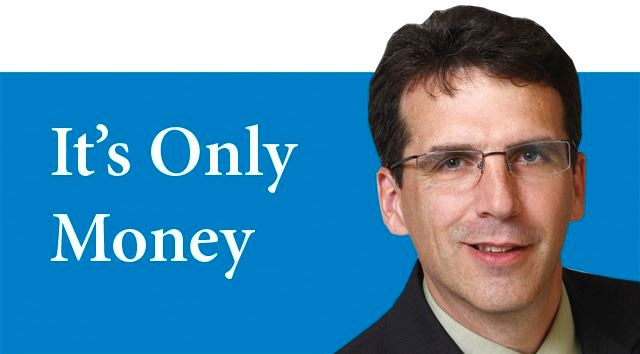About 27 years ago, my boss sat down with the holiday calendar between us. While asking me to nail down the first paid Christmas vacation of my life, he let me in on a little secret. He said he liked to work Christmas Eve and generally around holiday time because it is very slow around the office, we usually get off early, and... there are lots of treats.
With visions of my feet on my desk and peppered salami floating in the office air, I penciled myself in to work on Christmas Eve. It paid off with loads of shortbread, smoked salmon, and savory sausage sandwiches. I might have even had half a salami in my briefcase on the Skytrain ride home that day, resulting in an unwipeable smirk on my face all the way.
This idea backfired on me a few times over the years, when I experienced the mixed fortune of having to work on New Year's Eve. Too often, a financial time bomb would drop, especially when I worked as a risk manager. In fact, it was so stressful that I learned to cringe on Dec. 31 - it occurred nearly every year, something like this:
- An accountant would advise a client to make a year-end adjustment to ensure that the picture at statement time would look a certain way for tax purposes. Although the advice was probably provided several weeks in advance, a busy client might forget until the very last minute;
- This temporary one-day adjustment could be for several hundred thousand dollars, and had significant tax consequences if not done just right.
Suffice it to say, this resulted in some frantic discussions, which clouded the otherwise pleasant time of year. It's easy to say that a one-day loan is no big deal, but once the funds had been moved, sometimes the only way to ensure their return within acceptable risk parameters, was to adjudicate them as a longer-term loan. It was our job to consider what might go wrong and to manage for that. And doing all that in less than a day can be rough.
Honestly, we did find ways to relent on terms and conditions, especially for well-established clients but it was an avoidable headache which I expect my colleagues at the bank still sometimes have to manage that time of year. So, yeah. Give us a little heads up several days in advance. There might even be some cookies and punch in it for you!
In part three of our annual peak and year-end tax planning, we delve in to some ideas, which should also be implemented well in advance of the Christmas season.
Tax installments
If you are required to make quarterly tax installment payments to the CRA, you should make your final payment on or before Dec. 15, 2017 to avoid late interest charges. If you missed an earlier installment payment deadline, you may want to consider making a larger final installment payment or make your final installment payment earlier than the Dec.15, 2017 deadline to minimize late interest charges.
You may have the opportunity to reduce or defer your tax installment liability by switching the method you use to calculate your installments. It may be more advantageous to base your installments on the current year's estimated taxes, rather than on the prior year. However, you must be careful with this. If you underestimate your tax installments for the current year, you could be subject to interest and penalties. Keep your trusted accountant in the decision.
Charitable donations
Making a charitable donation is one of the ways that you can significantly reduce the personal tax you pay. The final day to make contributions to a registered charity in order to claim the donation tax receipt on your 2017 income tax return is Dec. 31, 2017.
Instead of cash, you can donate publicly listed securities to charities (without being subject to capital gains tax), and receive a donation tax receipt for the value of the security at the time of the donation.
If you plan to do this, the transfer must take place before year-end, so ensure you start this process well in advance to allow for processing and settlement time, typically at least five business days. But seriously, start way sooner.
TFSA contributions
If you have not yet done so, you can make your TFSA contribution for 2017 (up to $5,500) and catch up on any unused contribution room from 2009-2016. The TFSA enables you to earn tax-free investment income, including interest, dividends, and capital gains, which may result in greater growth compared to a regular taxable account. You can make tax-free withdrawals at any time, for any reason, and any amount you withdraw is added back to your available contribution room on January 1st of the following year.
If you are thinking of making a withdrawal from your TFSA in the near-term, consider doing so before Dec. 31. This will allow you to recontribute the amount withdrawn as early as Jan.1, 2018 rather than having to wait until 2019 to recontribute.
Mark Ryan is an Investment Advisor with RBC Dominion Securities Inc. (Member-Canadian Investor Protection Fund), and these are Mark's views, and not those of RBC Dominion Securities. This article is for information purposes only. Please consult with a professional advisor before taking any action based on information in this article. Mark can be reached at [email protected].



